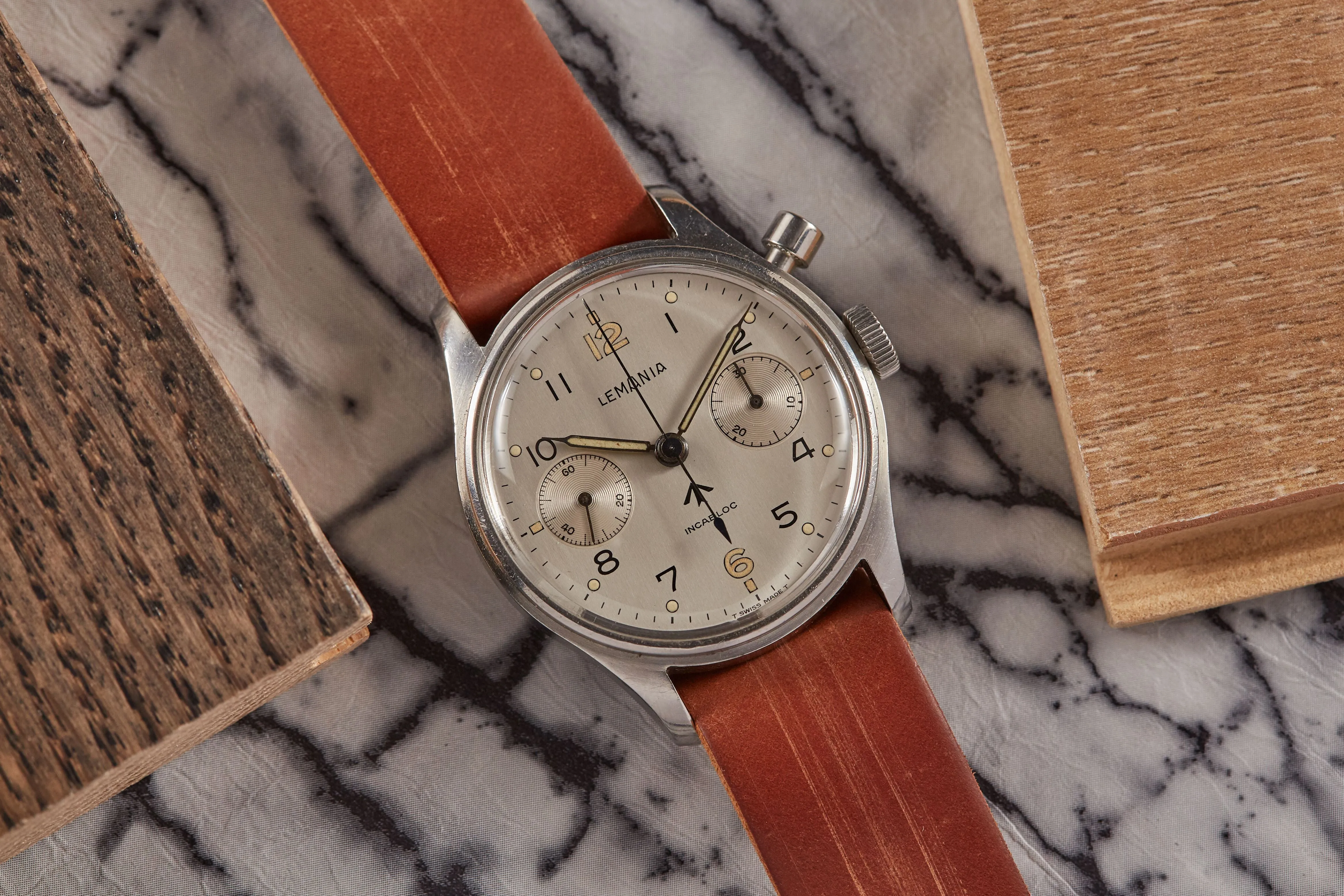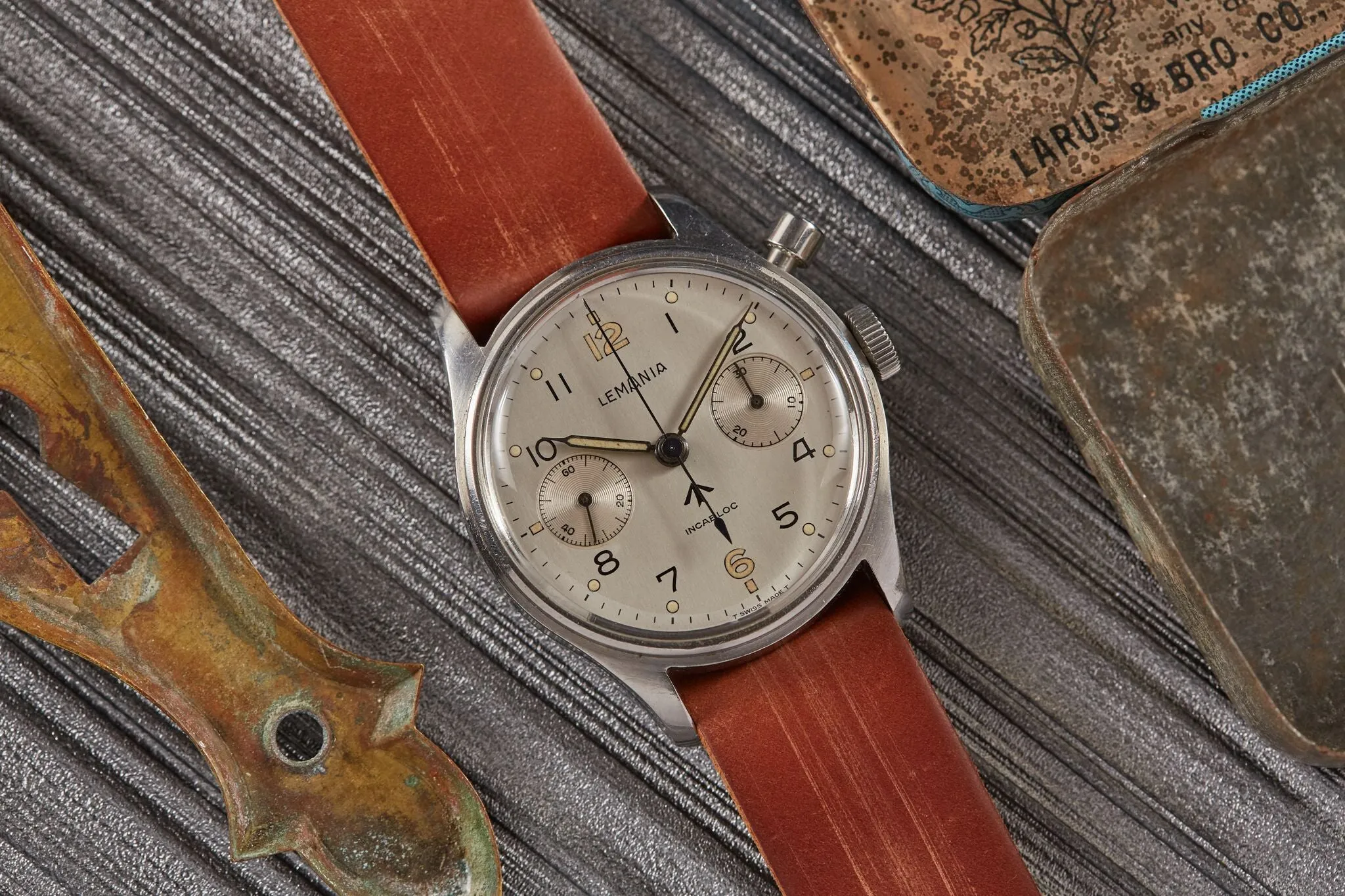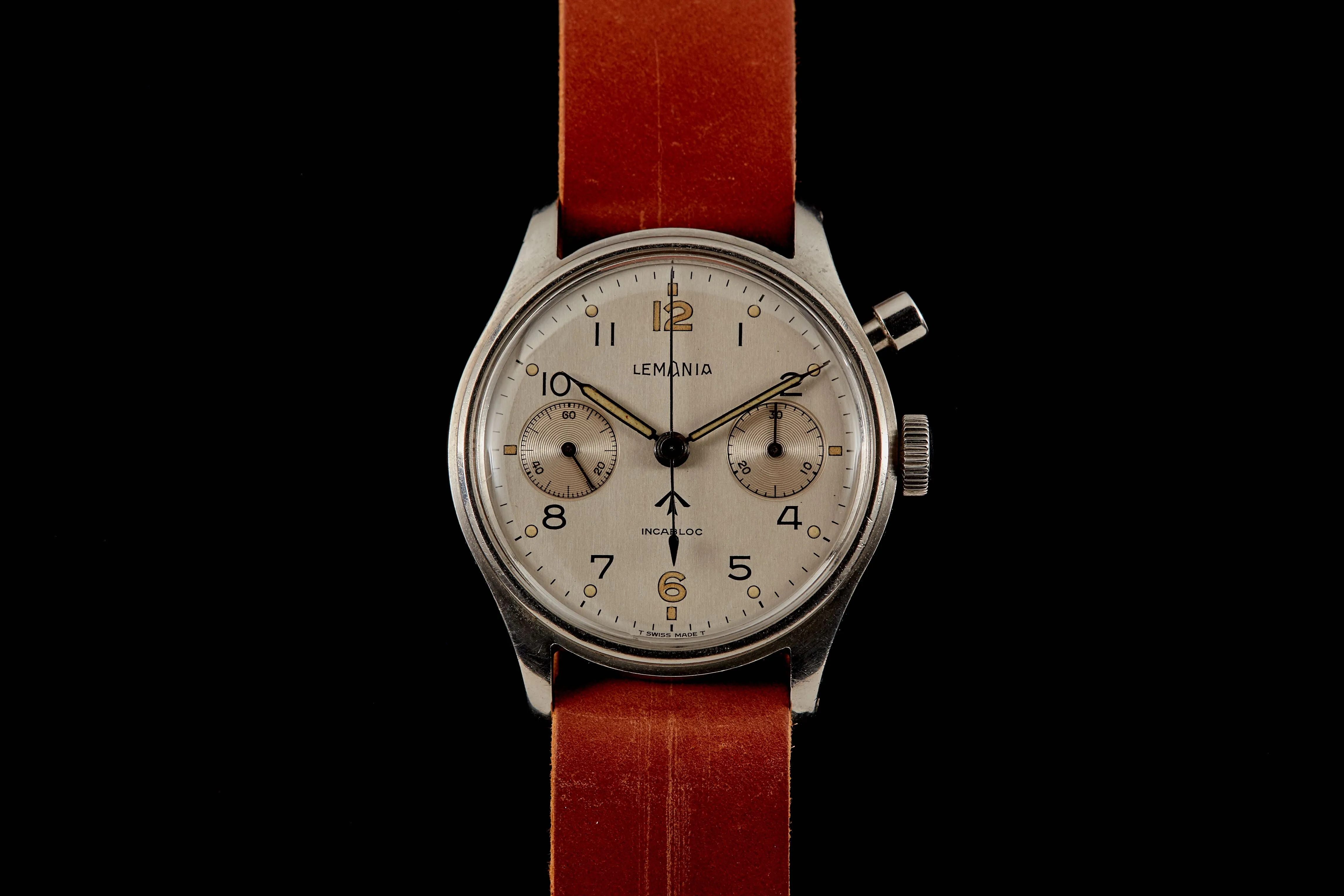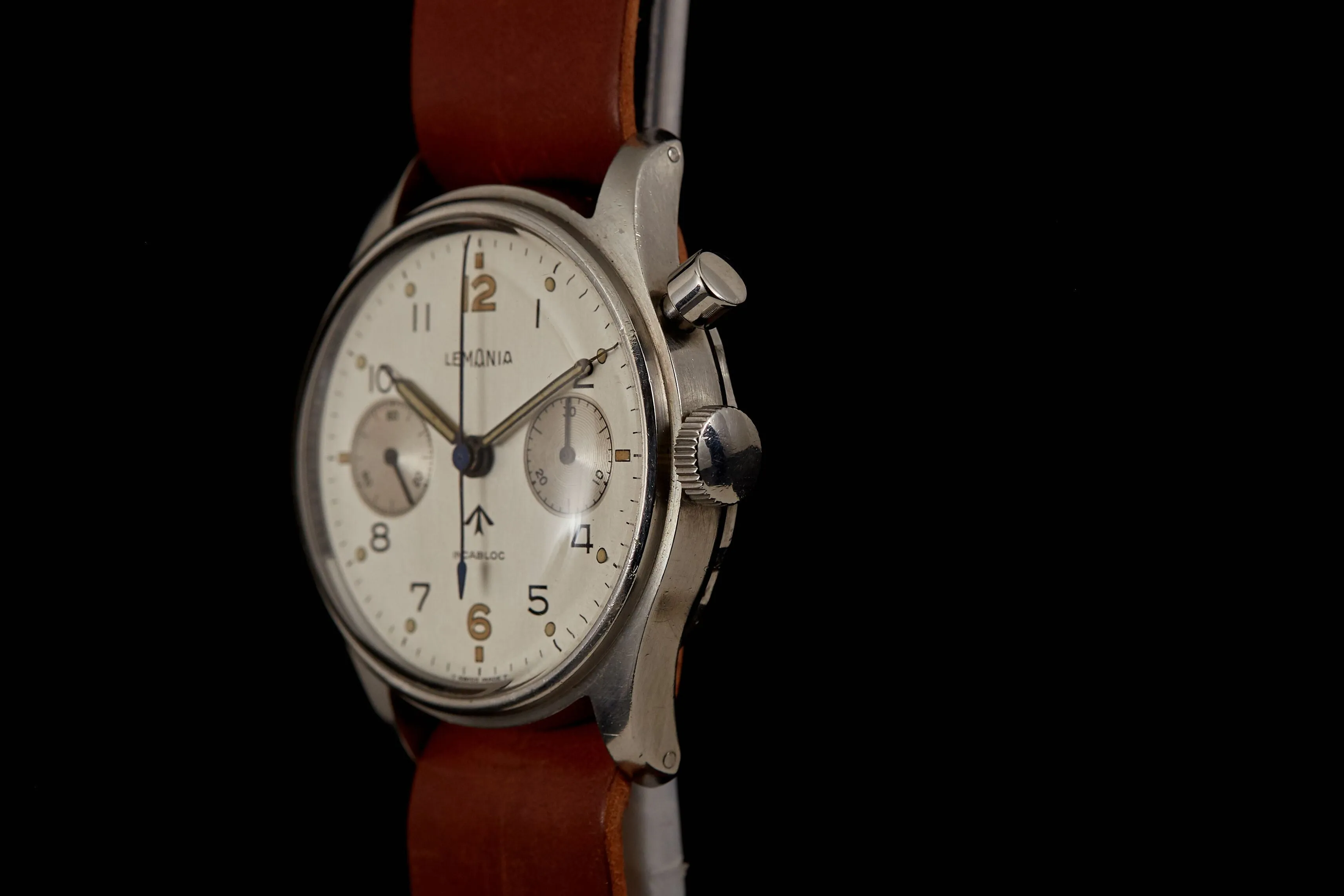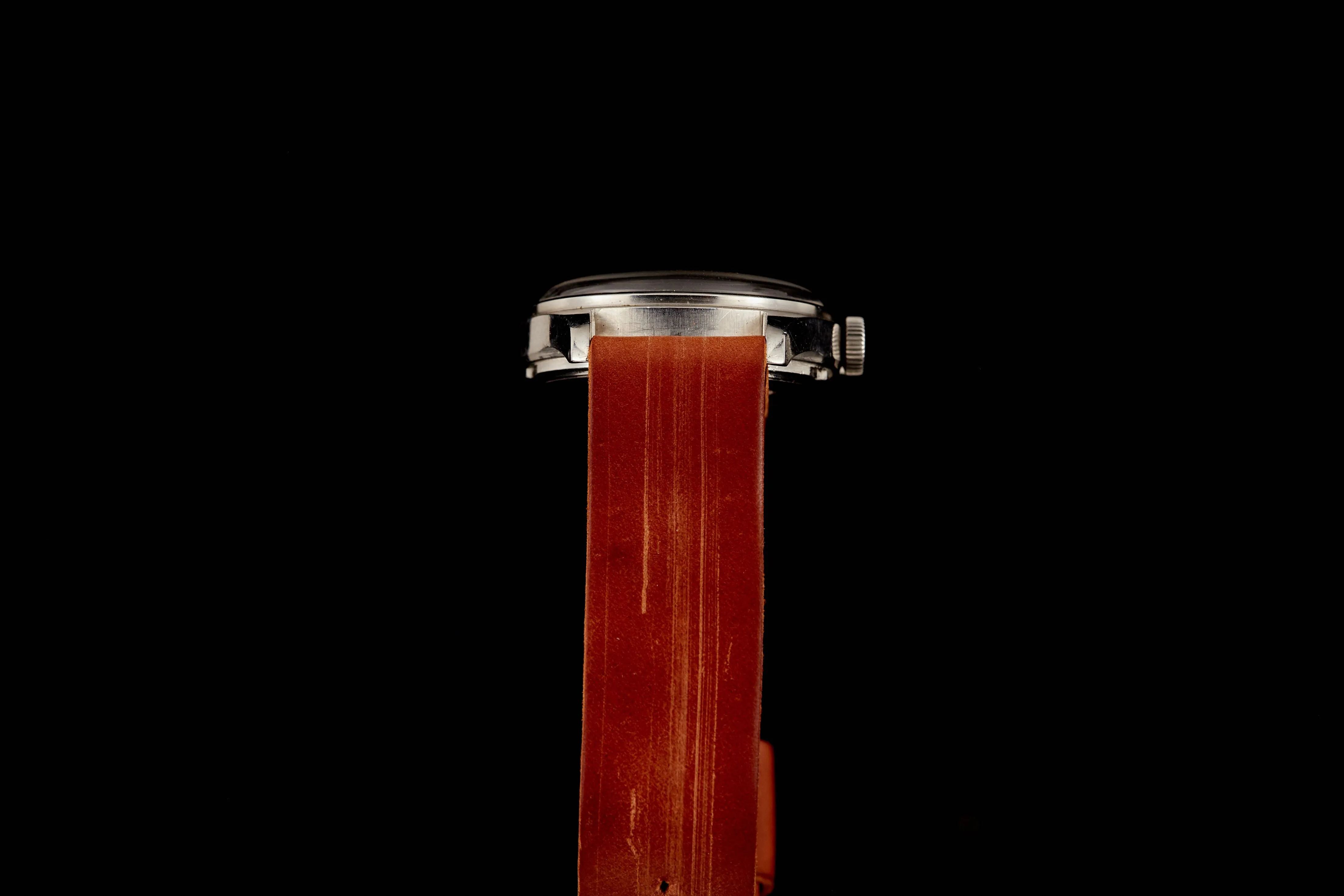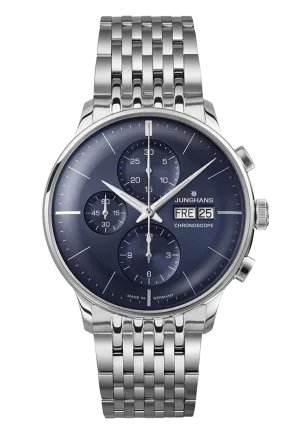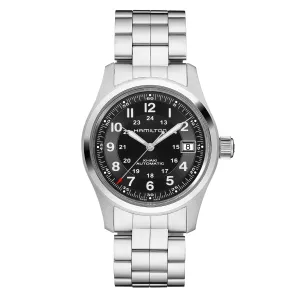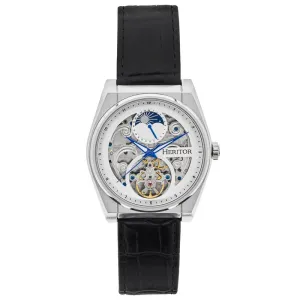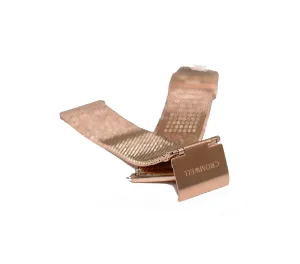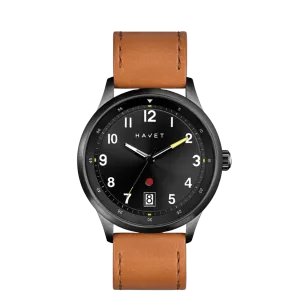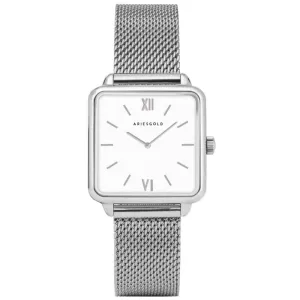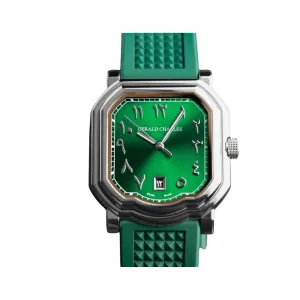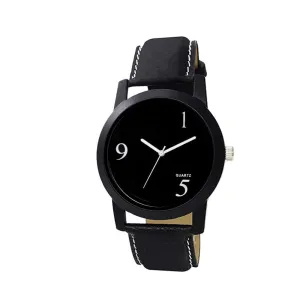Why We Love It
In the world of vintage timepieces, there are few things more desirable than military watches.
They were built to be rugged, dependable, and above all else functional - lives depended on it.
Within the range of military-issued timepieces there are a number of sub-genres, including field watches, divers, and aviator's chronographs among others, all worthy of study and admiration in their own right. But there are few that are as unique and distinct as the Lemania Monopusher Chronographs issued to the British Royal Navy.
Immediately recognizable as a military timepiece due to the simple Arabic numerals, unmistakable MOD "Broad Arrow" pheon, and "H.S" caseback engravings (H.S. standing for Hydronic Service, aka the Navy) these watches were manufactured under contract specifications by Lemania beginning in the 1950's. This particular example features a supremely clean dial, blued steel syringe hands and a remarkably sharp case.
Dating from a pivotal time in British Naval history - the dawn of the atomic age - this incredibly crisp and unique chronograph is a perfect choice for military enthusiasts and vintage watch collectors alike!
The Story
Lemania, established in 1884 by Alfred Lugrin, is perhaps one of the most recognizable names in the history of wrist chronographs. At and at his own manufacture, which he ran under his own name, Lugrin gained a reputation for expertise and the soundness of his èbauches, particularly chronographs. After his death, it was under his son-in-law Maurice Meylan's leadership that the manufacture was renamed Lemania and moved to L'Orient. In 1932, Lemania joined Omega and Tissot to form SSIH (Société Suisse pour l’Industrie Horlogére SA). It was this relationship--particularly with Omega--that would result in the creation of some of the most iconic calibers in horological history, like the Lemania 1873 (or Omega Caliber .861) found in the legendary .
Like many manufactures, Lemania also equipped watches to the world's militaries, including those of Sweden, , and the United Kingdom. For many collectors, they encapsulate the essence of "tool watch" in their most elemental form--if for no other reason than that they were built to be issued to sailors, soldiers, and airmen and brought into some of the harshest environments possible. Their stark, no-frills designs were universally practical and rugged, intended for maximum utility.




